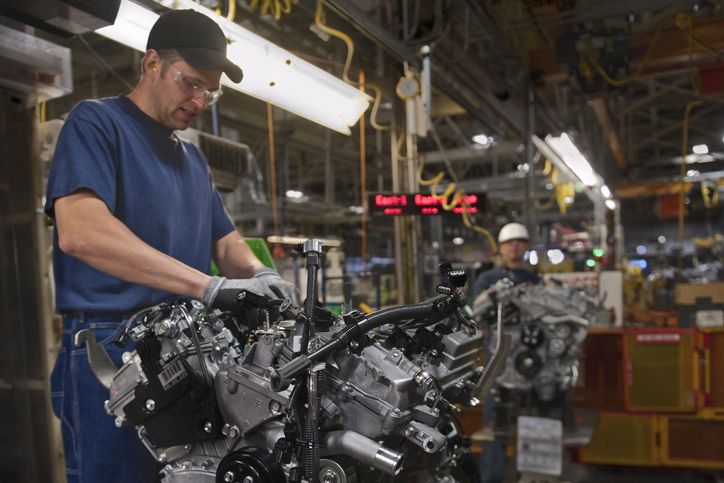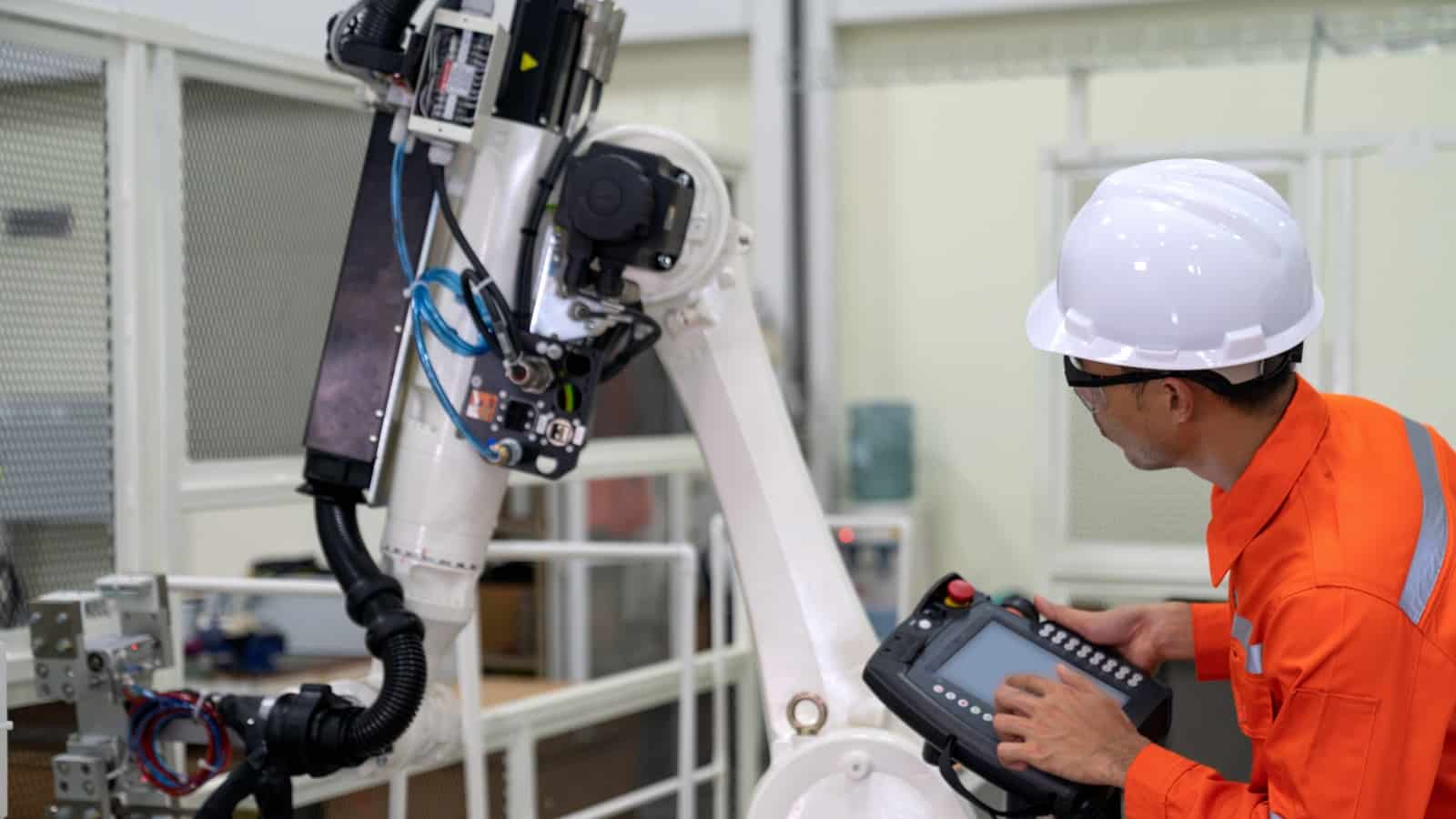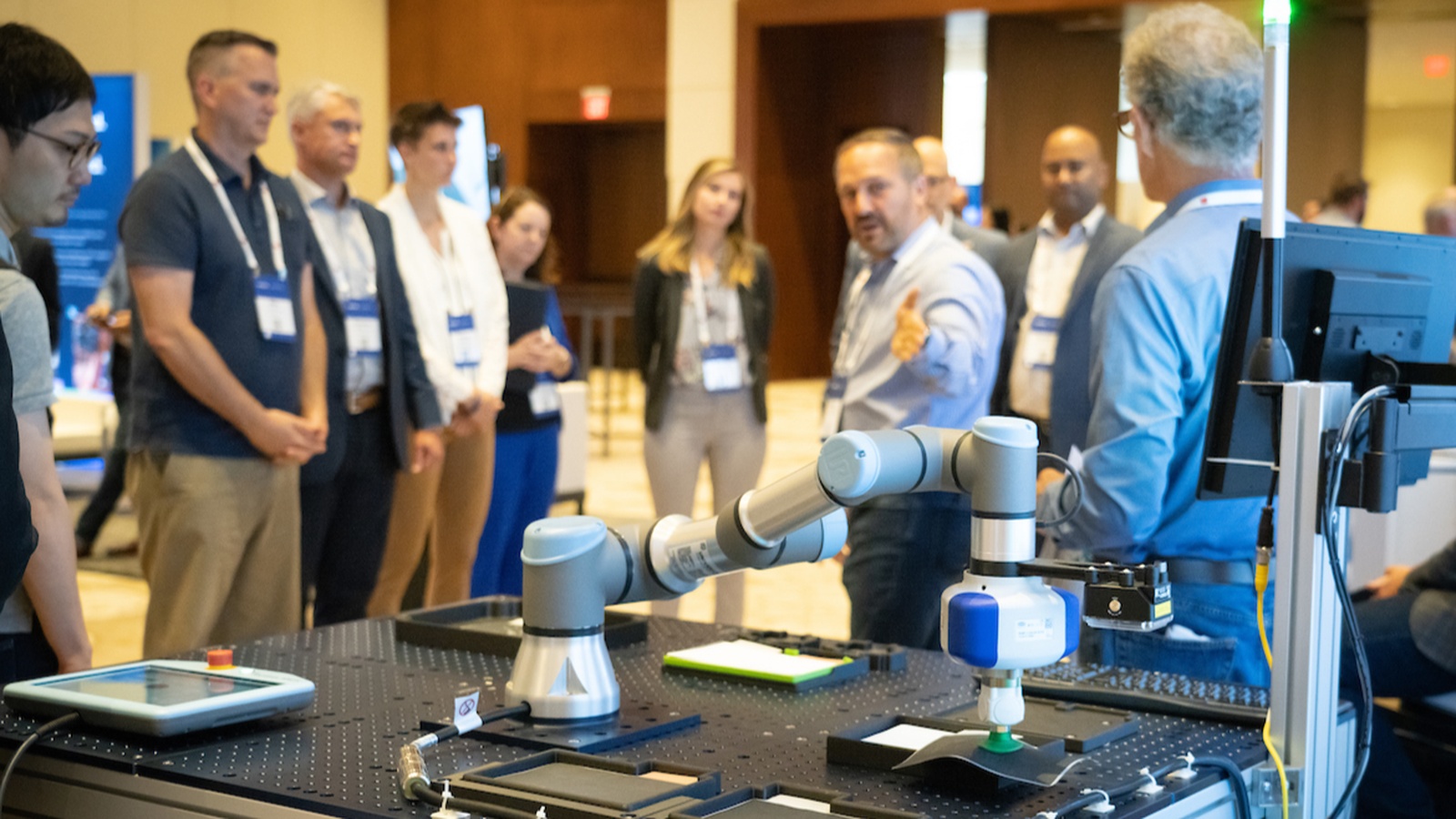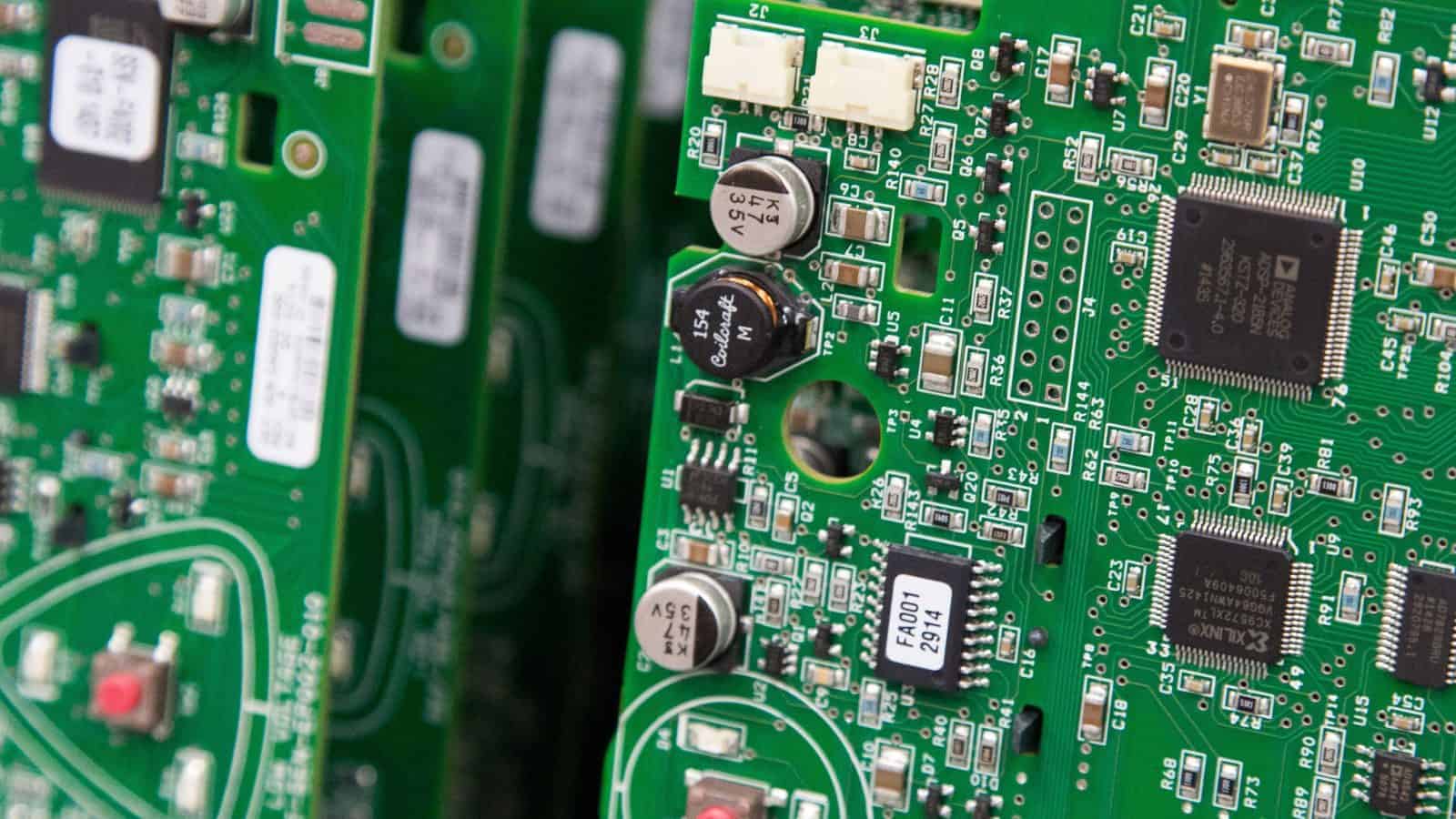How to Protect Your Company’s IP

Safeguarding intellectual property is possible even when patents are not stringently enforced, according to James Nebus, associate professor and chair of the business department at Suffolk University’s Sawyer School of Business. He discussed the topic at this year’s annual Innovation Research Interchange conference back in June. The IRI is a division of the NAM dedicated to advancing innovation management and creating best practices in the industry.
Protecting IP: In his keynote speech, Nebus outlined several actions taken by well-known companies to defend against patent infringement in “weak-enforcement countries.”
Raise barriers: One of the most successful strategies was raising the barrier to imitation, Nebus said. Companies that have used this method to guard against what Nebus called “product knowledge leakage” include DuPont and Dow. They have taken the following steps:
- Installed information technology defensive shields.
- Appointed trade secret managers.
- Conducted employee IP training.
Try a different barrier: Another way that companies have kept imitators at bay is to “bundle imitable products with complementary inimitable products,” according to Nebus.
- This is a strategy IBM began to employ many years ago. “When computer hardware first became a commodity, IBM … transformed themselves from a computer hardware company to a solutions and services company,” Nebus said.
- “And by doing that, they changed the parameters of the customer ‘buy decision’ from the price of the hardware to the value of the solution to their business.”
Advanced manufacturing: Another way to raise the “barrier to commercialization,” as Nebus calls it, is to use advanced manufacturing techniques that are not easily copied.
- Apple Inc. did this well in 2008, when it came out with its ultra-light, ultra-thin MacBook Air to compete with lower-cost Asian PC vendors, Nebus said.
- “The packaging technology that enabled that design … started with CNC, computer numerically controlled milling process, which at that time was really used for low-volume prototypes. They invested in manufacturing R&D to transform that process … to high-volume production,” he explained.
- “The imitators really couldn’t make that big investment, so Apple separated themselves.”
Parting thoughts: Nebus ended his talk with three takeaways for the audience.
- First, “an effective strategy consists of implementing the protection mechanisms necessary to raise one of the barriers above the abilities of the imitator.”
- Second, companies may require different strategies for different countries, especially if some are developed and others are developing.
- Finally, companies should decide where to locate headquarters not just “on economic factors. [Remember] to take IP risks into consideration.”
Learn more: Head on over to the IRI website to check out more of its programs and events.
A Summer Reading List for Innovative Manufacturers

Heading to the beach? Take along the Manufacturing Leadership Council’s summer reading list to catch up on today’s top trends in digital manufacturing while you catch some rays. With these articles, you’ll discover new ideas, technologies and best practices to give your company a competitive edge.
Workforce: Leading the Way to Workforce Optimization. As digitization changes employees’ expectations of their employers, manufacturers must adapt. Examples include options for remote work, interactive training, agile and rapid collaboration platforms, career development, work-life balance and more.
Industrial automation: Camozzi’s Autonomous Vision. Successful autonomous manufacturing will depend on the fundamental relationship between humans and machines, says Camozzi Group CEO Lodovico Camozzi, whose company makes industrial machinery. In a recent interview with the MLC, Camozzi shared his view of manufacturing’s autonomous future, including:
- How advanced additive manufacturing approaches promise new production paradigms;
- The importance of collaboration in driving innovation and excellence; and,
- Why the industry must maintain a human focus in today’s digital world.
Cybersecurity: Ransomware Attacks Increasingly Targeting Manufacturers. Think your business is safe from hackers? Think again. Ransomware attacks against manufacturers are on the rise. All businesses should be on guard against cyber extortion, advises Peter Vescuso, vice president of marketing for industrial cybersecurity provider Dragos and a member of the MLC.
Supply chain: How Manufacturers Can Navigate Supply Chain Challenges.
As global supply chain woes, worker shortages and wage inflation challenges intensify, manufacturers everywhere want to know the best way to navigate them. In this article, a panel of industry experts shares top tips to sustainably and profitably overcome current obstacles.
Artificial Intelligence: AI Roadmap: How Manufacturers Can Amplify Intelligence with Artificial Intelligence. Artificial intelligence offers manufacturers a host of benefits, including better visibility into supply chains, insights from predictive analytics and the ability to quickly respond to unexpected changes in demand. A six-step road map can help manufacturers looking to integrate AI into their businesses.
5G: 5G Will Help Unlock M4.0’s Potential. 5G technology offers speed and capacity advantages to manufacturing companies. According to the MLC’s recent Transformative Technologies survey, 26% of manufacturers have already invested in 5G technology. More than half expect to invest or are considering investing in the technology over the next two years to take advantage of 5G’s benefits.
Sustainability: Overcoming Roadblocks to Advance Sustainability Programs.
The manufacturing industry is expected to improve its sustainability and keep leading the fight against climate change. However, making green changes to processes and procedures can be costly. To get the most bang out of their sustainability investments, manufacturers should focus on data-driven initiatives and indicators.
Looking for more digital manufacturing insights? Browse the Manufacturing Leadership Journal for additional information on technology, organizational structure and leadership in manufacturing’s digital era.
What Manufacturing Leaders Learned at Rethink 2022

Manufacturers flocked to Florida this summer to discuss the cultures, skills and technologies necessary for digital transformation at the 2022 Rethink Summit, the signature event of the NAM’s Manufacturing Leadership Council. The MLC is the world’s first member-driven, global business leadership network dedicated to senior executives in the manufacturing industry.
The big event: The first in-person Rethink since 2019, this year’s summit drew the largest crowd since the annual event began 18 years ago.
- The conference in Marco Island, Florida, hosted some of the most innovative leaders and teams in the industry, from companies such as Pfizer, Intel, Dow, Saint-Gobain and many more.
- Participants learned about real-world advances and shared best practices in supply chain resilience, effective business cultures, machine learning, business ecosystems and more—as explained by industry experts who put these innovations into practice themselves.
The panels: Here is a quick sample from the array of manufacturing expertise on offer.
- A Pfizer case study: Pfizer Vice President of Digital Manufacturing Mike Tomasco explained how Pfizer Global Supply transformed itself from a digitally siloed operation to a world-class digital powerhouse.
- Bridging the digital divide: A panel of leaders—including Graphicast President Val Zanchuk, BTE Technologies President and NAM SMM Board Chair Chuck Wetherington and Intel Senior Director of Industrial Innovation Irene Petrick—discussed how small and medium-sized manufacturers can keep up with the digital transformation occurring throughout the industry.
- Reaching the next generation: A panel of young manufacturing leaders from Dow, Cooley Group and Saint-Gobain North America discussed what young people are looking for in manufacturing jobs, including interdisciplinary teams and lots of communications up and down the organization levels.
A week of manufacturing: The Rethink Summit was only one highlight of a week of manufacturing events put on by the MLC. The roster of events also included the MLC’s Council Day and the ML Awards Gala.
- Council Day offers MLC members the opportunity to chart the agenda for the MLC’s next year, thus influencing how the whole industry thinks about and plans for digital innovation.
- The Awards Gala spotlights companies and individuals doing incredible work to advance M4.0. The black-tie event honored leaders and companies in 11 project categories, plus the Manufacturers of the Year and Manufacturing Leader of the Year.
- This year, the MLC named Pfizer CEO Dr. Albert Bourla the Manufacturing Leader of the Year, for Pfizer’s extraordinary and ongoing contributions in fighting the COVID-19 pandemic.
The last word: “[T]he fundamental shift in our economy to doing business digitally in all industries, including manufacturing, not only continues but is gaining greater speed and urgency,” said MLC Co-Founder David R. Brousell during an address at Rethink.
Join us next year: Keep up to date with the MLC by visiting the website and stay tuned for Rethink 2023!
Manufacturers Back Chips Bill, Call for Further Action from Congress
Timmons: “A vote for the CHIPS Act funding is a vote for a stronger, more competitive manufacturing industry in America.”
Washington, D.C. – Ahead of consideration of legislation to bolster U.S. semiconductor manufacturing, National Association of Manufacturers President and CEO Jay Timmons released the following statement:
“A vote for the CHIPS Act funding is a vote for a stronger, more competitive manufacturing industry in America. But if Congress fails to pass this investment in the coming days, they will hand other countries a competitive advantage and weaken our own economy at a precarious moment.
“Other provisions of the China competition bill still under negotiation also need to make it to the president’s desk, and manufacturers firmly support their inclusion in this package. We will continue our advocacy for the anti-counterfeiting measures, trade provisions, supply chain investments and more. Congress must get those done.
“This week, we can take a powerful step forward with chips funding and move toward a future where semiconductor shortages—and the disruptions they’ve created—are a thing of the past. Other nations are not waiting around to ramp up semiconductor manufacturing. America should be leading, not falling behind.”
Background:
According to the NAM’s latest Manufacturers’ Outlook Survey, more than 88% of respondents said it was important for the federal government to take steps to support the domestic manufacturing sector in the face of increased global competition for industrial investment, with nearly 58% saying “very important” and 30.7% saying “somewhat important.” When asked about what aspects of the China competition legislation were most important for supporting manufacturing activity, the top choices were addressing port congestion and competition issues in ocean shipping (70.9%), eliminating ill-conceived labor provisions that facilitate unionization campaigns (61.3%), strengthening U.S. leadership in energy innovation and competitiveness (58.2%), funding to increase domestic semiconductor production capacity (57.9%), investments to support the critical minerals supply chain (55.7%) and ensuring the tax code provides a full deduction for research expenses (48.3%), among others.
-NAM-
The National Association of Manufacturers is the largest manufacturing association in the United States, representing small and large manufacturers in every industrial sector and in all 50 states. Manufacturing employs more than 12.8 million men and women, contributes $2.77 trillion to the U.S. economy annually and accounts for 58% of private-sector research and development. The NAM is the powerful voice of the manufacturing community and the leading advocate for a policy agenda that helps manufacturers compete in the global economy and create jobs across the United States. For more information about the NAM or to follow us on Twitter and Facebook, please visit www.nam.org.
Manufacturing Leadership Council Recognizes Pfizer CEO

The Manufacturing Leadership Council—a division of the NAM that helps manufacturers leverage digital transformation—named Pfizer CEO Dr. Albert Bourla the 2022 Manufacturing Leader of the Year at the 18th annual Manufacturing Leadership Awards Gala.
The details: The ML Awards are the U.S. manufacturing industry’s biggest stage for recognizing excellence in digital manufacturing. Since the program’s founding in 2005, more than 1,000 high-performing projects and individual leaders have been honored with an award. Winners represent companies of varying sizes in a wide array of industries.
The big award: The Manufacturing Leader of the Year award was presented to Bourla for Pfizer’s extraordinary and ongoing contributions in fighting the COVID-19 pandemic.
- “Manufacturing in America today is stronger thanks to the leadership of Dr. Bourla and his team at Pfizer, including our Executive Committee member Mike McDermott,” said NAM President and CEO Jay Timmons. “Albert and Mike’s passion and dedication to defeating COVID-19 set an example for thousands of companies as our industry navigated and responded to the evolving pandemic, and their leadership and innovation will make us better prepared to respond to the next crisis.”
Other honorees: Awards were given to companies that excelled in various categories of manufacturing, including Protolabs for collaborative ecosystems, AB InBev for digital network connectivity and operational excellence, Dow for digital supply chains, General Motors for engineering and production technology, Flex and Johnson & Johnson for enterprise integration technology, AUO Corporation for sustainability and ALOM Technologies for transformative cultures.
Manufacturers of the Year: Protolabs was named the Small/Medium Enterprise Manufacturer of the Year, and AB InBev was named the Large Enterprise Manufacturer of the Year.
The last word: “Manufacturers continue to be the driving force for global economic recovery and pandemic response as they establish innovative ways to problem-solve in an increasingly complex environment,” said MLC Co-Founder, Vice President and Executive Director David R. Brousell. “Those recognized tonight have helped establish a roadmap for the future of the sector and highlight the importance of Manufacturing 4.0.”
NAM Outlines Health Care Priorities

In a message to members of the Congressional Health Care Task Force, NAM President and CEO Jay Timmons urged Congress to pursue several health care priorities for manufacturers.
The big picture: Timmons laid out three core principles that guide NAM health care advocacy and engagement.
- First, the NAM believes that free enterprise, competitiveness, individual liberty and equal opportunity are the values that can successfully push forward the process of simplifying health care and achieving lower costs.
- Second, the NAM believes that the medical credo “first, do no harm” should guide health care policy efforts.
- Third, the NAM believes that the health care policy and business environment must allow and encourage unparalleled innovation, investment and manufacturing right here in the U.S.
In accordance with these principles, the NAM is pushing for several specific policy advances.
Transparency: “Manufacturers appreciate ongoing efforts to improve transparency in health care,” Timmons wrote. “Our industry has experienced the impacts of cost variation related to a range of health care services. These impacts can make health coverage more frustrating and expensive, for both consumers and employers who sponsor coverage.”
Connectivity: “The technology is available, and businesses have the capability to deliver and realize the potential of a fully connected health care system,” Timmons wrote. “Privacy laws and regulations need updating so that the deployment and adoption of new innovations to improve connectivity in our health care system can flourish.”
HSAs: The NAM believes Health Savings Accounts allow employees to have more control over their health care spending. To ensure HSAs can increase consumer flexibility and benefit American employees, the NAM supports efforts to increase limits and modernize rules governing HSAs.
Value-based arrangements: “Manufacturers are encouraged by the potential for health care innovation through outcomes-based health care arrangements,” Timmons wrote. “These arrangements would align incentives across a range of parties—health care providers, employers, patients, insurers and pharmaceutical and life sciences manufacturers—so that delivery of care, payment arrangements and clinical outcomes are achieved in an efficient manner.”
Association health plans: The NAM supports efforts to reform, advance and strengthen Association Health Plans. AHPs are beneficial especially to small businesses that struggle to offer affordable health care coverage to their employees. The NAM believes that additional legislation is needed to protect the longevity and sustainability of AHPs as a health care option.
Innovation: The NAM believes strong intellectual property protection is essential to creating a more competitive health care market, bringing down prices and fostering innovation by encouraging research and development.
The last word: “Despite the many challenges and strains facing the health care system, we are a nation that prides itself on first-class, best-in-the-world medical care,” Timmons wrote. “Our institutions, public and private, continue to lead the world on patient care, lifesaving treatments and medical research. We must uphold those successes while seeking to control or lower the cost of health care through market-oriented approaches. Employers are leading a great deal of innovation in health care delivery, and those positive developments must be allowed to flourish.”
NAM Lays Out Economic Recommendations

To support the work of Congress’ Jobs and Economy Task Force, NAM President and CEO Jay Timmons laid out a series of recommendations designed to strengthen manufacturers’ competitiveness and the economy as a whole.
Supporting innovation: NAM opposes a new provision in the tax code that makes research and development expenses deductible over a period of years, rather than in the same year they are incurred. This change makes R&D more expensive in the US, threatening American innovation as well as manufacturing jobs that are directly or indirectly supported by R&D.
Financing growth: Timmons outlined NAM’s support for reversing the stricter interest deductibility limitation that went into effect this year. “The stricter limitation essentially acts as a tax on investment and makes the U.S. a global outlier,” said Timmons. “Permanently reversing this harmful change will help support future long-term job-creating investments.”
Protecting a level playing field: Timmons urged Congress to prevent several scheduled tax changes to the international tax regime from going into effect. He wrote, “Congress should ensure that manufacturers do not face a harsher tax regime than the rest of the world as it would disadvantage manufacturers and manufacturing workers in the US.”
Ensuring access to capital: Since manufacturing is a capital-intensive industry that requires significant investments in equipment, facilities and R&D, NAM encourages the federal government to help, rather than hinder, access to capital. Timmons urged the government to enable capital formation by publicly traded companies, avoids imposing undue restrictions on pro-competitive mergers and acquisitions, and provides support for small and medium sized manufacturers.
Other recommendations: Timmons further encouraged Congress to strengthen, streamline, and codify the regulatory system to improve regulatory outcomes and efficiency, improve workforce development by updating the Work Opportunity Tax Credit, and bolster supply chain resiliency through the creation of a federal fund that provides grants, loans, and loan guarantees.
The last word: “At this time of high inflation, snarled supply chains, workforce shortages and global instability, manufacturers need every available tool to continue driving economic growth and job creation in the United States,” said Timmons. “As has been abundantly clear in recent years, manufacturing in America is critical not just to our economic health but to public health—to our very lives and livelihoods.”
- “The decisions policymakers make today will determine whether manufacturing in the United States—and therefore the entire American economy—will remain an engine of growth and opportunity. Manufacturers’ policy agenda provides a solid path forward.”
Read more: For more of the NAM’s policy agenda, check out Competing to Win.
Rockwell CEO Blake Moret Talks Supply Chains

Blake Moret thinks a lot about supply chains. The chairman and CEO of Rockwell Automation—the world’s largest company devoted exclusively to industrial automation and digital transformation—Moret is helping other manufacturers navigate the disruptions of the pandemic and the painful shortage of semiconductors.
On his way back from sharing his experiences and best practices at the World Economic Forum in Davos, Moret spoke with the NAM about the current state of the industry, his predictions for the future and what manufacturers should do to prepare.
What’s happening: Moret sees a few “overarching trends” in manufacturing: 
- First is the historically high levels of demand, which had been pent up during the pandemic and is also caused by businesses trying to expand their market share.
- Second, there is also a historic shortage of components, especially the very disruptive shortage of semiconductor chips.
- Last, of course, labor and material inflation is putting additional pressure on manufacturers’ operations.
The chip shortage: The shortage of semiconductors poses the biggest near-term problem for Rockwell and the industry, Moret notes. But the demand for chips isn’t just as simple as supply chain snarls and post-pandemic rebound; it is also caused by manufacturers working to make their products “smarter than ever before”—an industry trend that isn’t likely to change anytime in the future.
- Rockwell’s solution, says Moret, is to reduce pressure on its customers by “strengthening long-term relationships and tightly aligning technology roadmaps with existing suppliers and deploying our engineering resources to find alternatives for the most severely constrained types of chips.”
When can manufacturers expect relief from this chip crunch?
- Chip manufacturers are adding “incremental capacity,” says Moret, but “it will take a while for supply and demand to balance out.”
- “Over the next year, the situation will improve,” he adds, though manufacturers may still be dealing with constraints.
Redundancy: To cope with supply chain disruptions, Rockwell has also been adding redundant capacity into its worldwide network.
- The company is increasing the number of products that can be made in more than one facility around the world.
- “Just-in-time principles are very efficient when every link in the supply chain is doing what is expected. But with disruptions like the pandemic and chip shortages, that sort of efficiency is not totally possible,” Moret says.
- “Elements of redundancy that in the past were not able to attract funding will get funded now.”
The U.S. market is a top priority, Moret adds, and Rockwell has extensive operations here.
- “Even in a high labor-cost market, the high-trained [U.S.] workforce, coupled with advanced technology, can make products that can successfully compete anywhere on earth,” he says.
After the pandemic: Now that COVID-19 restrictions are all but over, what’s in store for Rockwell?
- Moret says that his company found that many of its jobs could be done from home. Its team buckled down during the pandemic, contributing to the production of essential products, such as packaged food and vaccines.
- Now, as workplaces have returned to “normal,” Rockwell continues to embrace a flexible work culture. Moret says its next challenge is ensuring that a workforce with such flexibility stays engaged and able to form productive collaborations.
“Workforce is very near and dear to my heart,” explains Moret. A former chair of The Manufacturing Institute’s Board of Trustees (and a current member of the NAM Executive Committee), Moret is a big proponent of developing flexible, targeted training programs.
- One such program at Rockwell, the Academy of Advanced Manufacturing, trains veterans for roles in manufacturing plants (much like the MI’s Heroes MAKE America program).
- It provides “outcome-based training,” Moret says, offering a “quicker and more hard-hitting program” that is 12 weeks long and does not necessarily require two- or four-year degrees.
What should manufacturers do? Moret has some advice for other manufacturers seeking to build more resiliency into their operations.
- He recommends developing a “product resiliency index,” which accounts for factors that affect production—the value of the product, its manufacturing complexity, how distributed the manufacturing needs to be, how many vendors are needed and more. Manufacturers should consider this right from the start of developing a product, Moret says.
- It’s also important to talk to key suppliers “to understand what their roadmaps are.” You need to know when you are relying on suppliers for products that aren’t “strategic” for them, he explains—as that could pose a problem for you down the line.
- Moret also recommends conducting this audit on both new and old products. “We’ve had to go back [to established products] to assess them with this resiliency index to make sure we’re not vulnerable.”
The last word: Collaboration with partners on supply chain issues and workforce development is key. “No one company can do it all. Being able to assemble the right team is maybe the most important starting point to emerging stronger than ever.”
For policy recommendations that address the supply chain and other challenges, and which can enhance U.S. manufacturing competitiveness, visit https://nam.org/competing-to-win/.
NAM Urges Biden Administration to Protect Innovation

NAM President and CEO Jay Timmons urged Biden administration officials to support innovative manufacturers and reject a dangerous proposal to waive intellectual property rights for COVID-19 vaccines, therapeutics and other products.
- Timmons’ call went out to U.S. Trade Representative Katherine Tai, Secretary of State Antony Blinken, Secretary of Commerce Gina Raimondo and senior White House officials.
The situation: Timmons’ advocacy comes in response to a World Trade Organization proposal that would waive IP rights for a broad range of COVID-19 products, putting American innovation and jobs at risk.
- As this goes to press, the U.S. and other countries are actively negotiating potential text ahead of the WTO’s forthcoming ministerial conference that kicks off this Sunday.
The issue: IP rights have been crucial in supporting American innovation and manufacturing during the pandemic. They have incentivized the rapid development of vaccines, COVID-19 therapeutics, personal protective equipment and other essential products and created the legal certainty for hundreds of innovative partnerships to ramp up their production.
The challenge: The controversial WTO proposal is rooted in the false premise that global vaccination efforts are lagging due to a lack of supply.
- “The primary challenge to global COVID-19 vaccination is not supply, but distribution and demand,” said Timmons.
- Facilitating global COVID-19 vaccination will take solving supply chain bottlenecks and logistical challenges while improving the ability of local health systems to deliver the vaccines and effective treatment.
The way forward: Instead of the waiver, the U.S. should push for creative efforts to fight COVID-19, including building consensus for the Trade in Health Initiative, working with like-minded countries to develop practical innovations that leverage increased trade and targeting WTO-identified trade bottlenecks.
- “The NAM and its members stand ready to work with you and your agencies to advance solutions that will, once and for all, tackle this devastating pandemic,” said Timmons.
NAM in action: The NAM recently launched an advertising campaign in key states and districts on the issue, urging the administration to protect American jobs and innovation.
Ransomware Attacks Increasingly Targeting Manufacturers

Think your business is safe from hackers? You could be wrong, according to the Manufacturing Leadership Council—the division of the NAM focused on digital transformation in manufacturing.
With the incidence of ransomware attacks against manufacturers on the rise, all businesses should be on guard against cyber extortion, advises Peter Vescuso, vice president of marketing at industrial cybersecurity provider Dragos and a member of the Manufacturing Leadership Council.
How it works: Ransomware schemes often target manufacturers by disabling their operations technology and blackmailing victims into paying to restore the functionality of their systems. Manufacturers that cannot afford to have production halted by hacks often have no choice but to pay the hackers’ ransom.
What we’re seeing: Industrial ransomware attacks increased significantly in 2021, with criminal groups specifically identifying manufacturers as vulnerable and profitable targets.
- Last year, manufacturing accounted for 65% of industrial ransomware incidents, according to Dragos.
- The top three manufacturing subsectors targeted by ransomware attacks were metal components (17%), automotive (8%) and plastics/technology (6%).
- Manufacturers as a group were targeted six times as often as the second leading industrial sector, food and beverage.
Why it matters: Many manufacturers remain unprepared for ransomware attacks.
- About 90% of manufacturers have limited visibility into their OT systems, according to Dragos.
- 90% of manufacturers are also ill prepared with poor network perimeters, 80% have external connectivity exposure in their OT systems and 60% use shared credentials that make it easier for ransomware groups to infiltrate systems.
Who’s behind it: In 2021, ransomware groups Conti and Lockbit 2.0 caused 51% of all ransomware attacks, and 70% of their attacks targeted manufacturers.
- These groups successfully developed malicious business models and used underground marketplaces to outsource operations to partners who then carried out the attacks.
- Ransomware groups also fund research and development to stay ahead of the curve on security and infiltrate systems.
What’s next: “Ransomware trends are likely to continue shifting as groups reform and reprioritize and as law enforcement pursues them and takes them offline,” says Vescuso.
- “As this evolution continues to evolve, Dragos analysts believe with a high degree of certainty that ransomware will continue to disrupt all industrial operations and OT environments through 2022, in manufacturing and beyond.”
Protect yourself: To protect against ransomware attacks, manufacturers must take the necessary steps to modernize and secure their IT and OT systems. Check out NAM Cyber Cover for information and risk management solutions.
